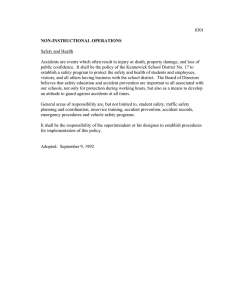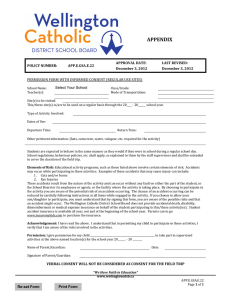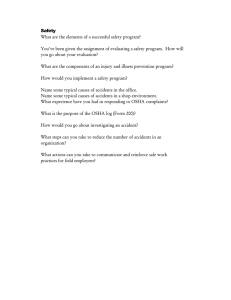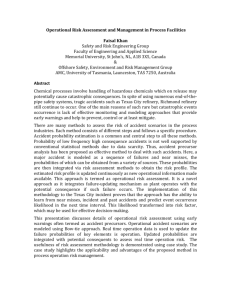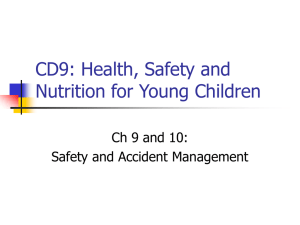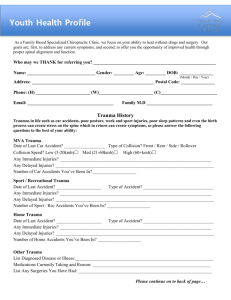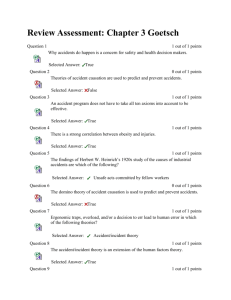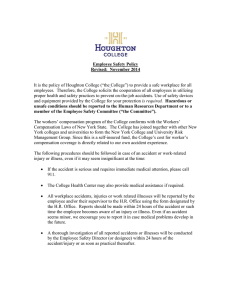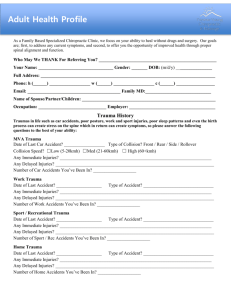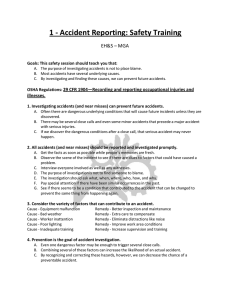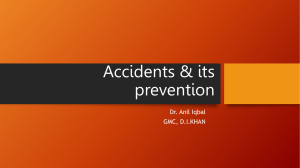WHAT COULD GO WRONG
advertisement
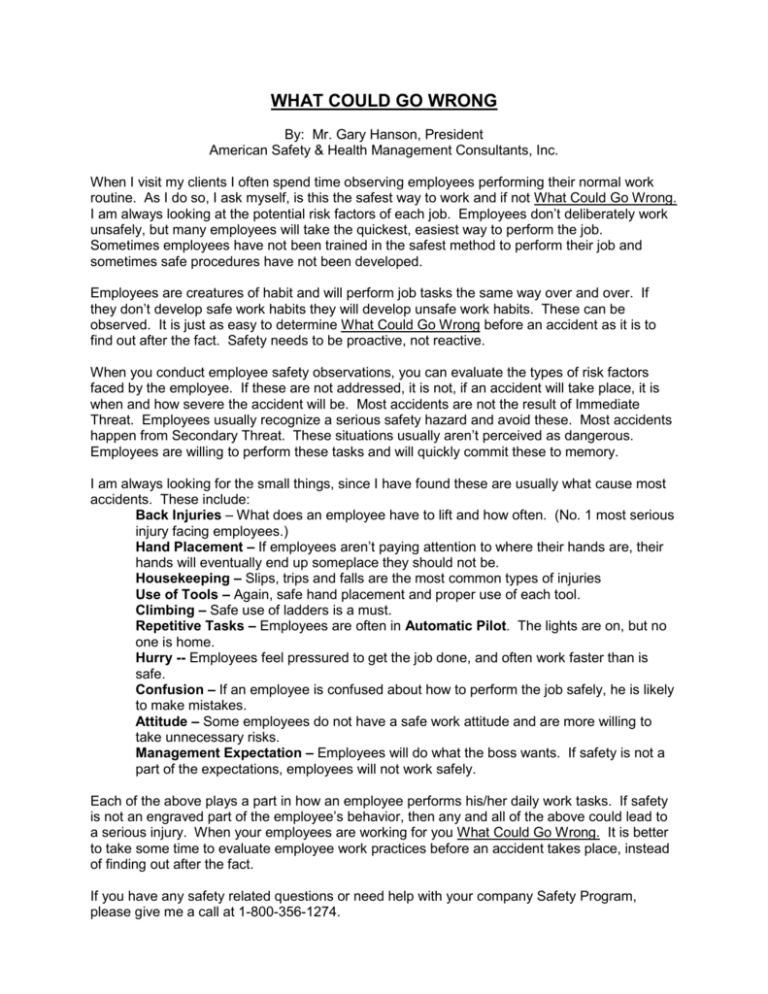
WHAT COULD GO WRONG By: Mr. Gary Hanson, President American Safety & Health Management Consultants, Inc. When I visit my clients I often spend time observing employees performing their normal work routine. As I do so, I ask myself, is this the safest way to work and if not What Could Go Wrong. I am always looking at the potential risk factors of each job. Employees don’t deliberately work unsafely, but many employees will take the quickest, easiest way to perform the job. Sometimes employees have not been trained in the safest method to perform their job and sometimes safe procedures have not been developed. Employees are creatures of habit and will perform job tasks the same way over and over. If they don’t develop safe work habits they will develop unsafe work habits. These can be observed. It is just as easy to determine What Could Go Wrong before an accident as it is to find out after the fact. Safety needs to be proactive, not reactive. When you conduct employee safety observations, you can evaluate the types of risk factors faced by the employee. If these are not addressed, it is not, if an accident will take place, it is when and how severe the accident will be. Most accidents are not the result of Immediate Threat. Employees usually recognize a serious safety hazard and avoid these. Most accidents happen from Secondary Threat. These situations usually aren’t perceived as dangerous. Employees are willing to perform these tasks and will quickly commit these to memory. I am always looking for the small things, since I have found these are usually what cause most accidents. These include: Back Injuries – What does an employee have to lift and how often. (No. 1 most serious injury facing employees.) Hand Placement – If employees aren’t paying attention to where their hands are, their hands will eventually end up someplace they should not be. Housekeeping – Slips, trips and falls are the most common types of injuries Use of Tools – Again, safe hand placement and proper use of each tool. Climbing – Safe use of ladders is a must. Repetitive Tasks – Employees are often in Automatic Pilot. The lights are on, but no one is home. Hurry -- Employees feel pressured to get the job done, and often work faster than is safe. Confusion – If an employee is confused about how to perform the job safely, he is likely to make mistakes. Attitude – Some employees do not have a safe work attitude and are more willing to take unnecessary risks. Management Expectation – Employees will do what the boss wants. If safety is not a part of the expectations, employees will not work safely. Each of the above plays a part in how an employee performs his/her daily work tasks. If safety is not an engraved part of the employee’s behavior, then any and all of the above could lead to a serious injury. When your employees are working for you What Could Go Wrong. It is better to take some time to evaluate employee work practices before an accident takes place, instead of finding out after the fact. If you have any safety related questions or need help with your company Safety Program, please give me a call at 1-800-356-1274.
